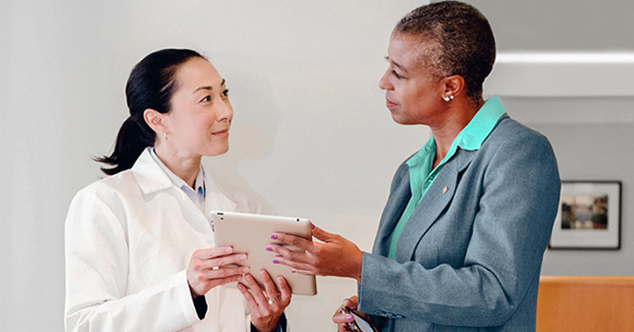Southwest Medical, part of Optum, is one of Nevada’s largest multi-specialty medical groups. We’ve been caring for southern Nevadans since 1972. We have decades of experience and a drive to better our patients' lives.
By combining technology and information, we give our patients the right care in the right setting. We provide primary, specialty, urgent, senior, ob/gyn, pediatric and convenient care.
To stay healthy, patients must be able to reach their clinicians. The team at Southwest Medical Associates was concerned about access for their patients who faced transportation barriers to regular visits with their primary care physicians.
Without the means, they could not physically get to an appointment. If patients were stuck in a rural area without a car or living in the city without an income to afford bus fare, their inability to get to the clinic for preventive and primary health services became a health service gap.
The Southwest Medical clinic solution was to meet patients in their communities with a clinic on wheels.
Mobile clinic design
The mobile clinic itself was designed to address the issue of access and population health.
The benefits in managing their chronic diseases, preventing disease through immunizations and regular check-ups, and establishing trust, increase the likelihood that patients will find ways to make regular clinic appointments, thereby improving patient health and lowering expenses.1
A 2014 study reported that the estimated 1,500 mobile clinics had more than 5 million visits per year and provided greater coverage to vulnerable populations at a lower cost than the standard clinic setting.2
With Dr. Robert McBeath, CEO of Southwest Medical Associates, leading the campaign for accessible care to those who could not reach the clinic, Southwest Medical, Health Plan of Nevada, and Sierra Health and Life jointly created a mobile clinic.
This 45-foot medical center on wheels would visit community sites with high numbers of patients unable to travel to the clinic.
Providing care
Once rolling, the mobile clinic began its regular schedule of visits to sites with high numbers of patients that fell into the transportation gap. Homeless shelters, churches and schools are some of the locations where services are given.
Certain days are set aside for specific types of patients. There may be a mammography clinic given at a rural church for women who find it difficult to make it in for routine screening.
For children who are not up to date on shots, an immunization clinic can be held at a local school. With insurance not a prerequisite of access to the mobile clinic, it is a part of the medical safety net for vulnerable populations.
Onboard the wheelchair-accessible mobile clinic is an advanced practice clinician (APC), a licensed practical nurse (LPN) and medical assistant (MA). The staff has access to two exam rooms, phlebotomy lab, ultrasound and mammography.

They are prepared to treat minor wounds, cough and colds, upper respiratory infections, urinary tract infections and other common low-acuity ailments. Ideally, the mobile clinic helps patients to be seen before their problems become severe.
The work of controlling and managing chronic health issues can begin with the treatment given in the mobile clinic. Hypertension can be monitored and medications can be refilled.
Asthma exacerbations can be treated with medications and education on environmental factors, plus strategizing how to reach the clinic for regular check-ups.
Patients with diabetes can find out how well their blood glucose is managed with an A1C test; they can be checked for any complications from the disease, and get their supplies refilled.
The act of making care convenient by traveling to the community helps engage patients in their own wellness.
In the three years since Southwest Medical has deployed the mobile clinic, thousands of patients have come through its doors, including more than 1,000 primary care visits in 2017 alone. In the same year, nearly 800 women received mammograms.
Closing the gap in our most vulnerable population, children were given 712 immunizations. Providing this preventative and primary care from the mobile clinic kept patients who could not access a doctor from having to go without.
It lightened the load of emergency departments where smaller problems can end up when, without care, they become larger problems.
Building community
Traveling to patients to provide care in their neighborhood builds trust and good faith between clinicians who represent health care and the patients that make up the community.
These relationships will translate into informed and engaged patients. With the mobile clinic, the goal is to help people to establish primary care with a local clinic, bridging the gap from no care to high quality primary care.
- Hill CF, Powers BW, Jain SH, Bennet J, Vavasis A, Oriol NE. Mobile health clinics in the era of reform. The American Journal of Managed Care. 2014;20(3):261-264.
- Ibid.
This publication is informational and for educational purposes for practitioners only. The views and opinions expressed herein are those of the authors and do not necessarily represent the views of Optum Care. The views and opinions expressed may change without notice.


